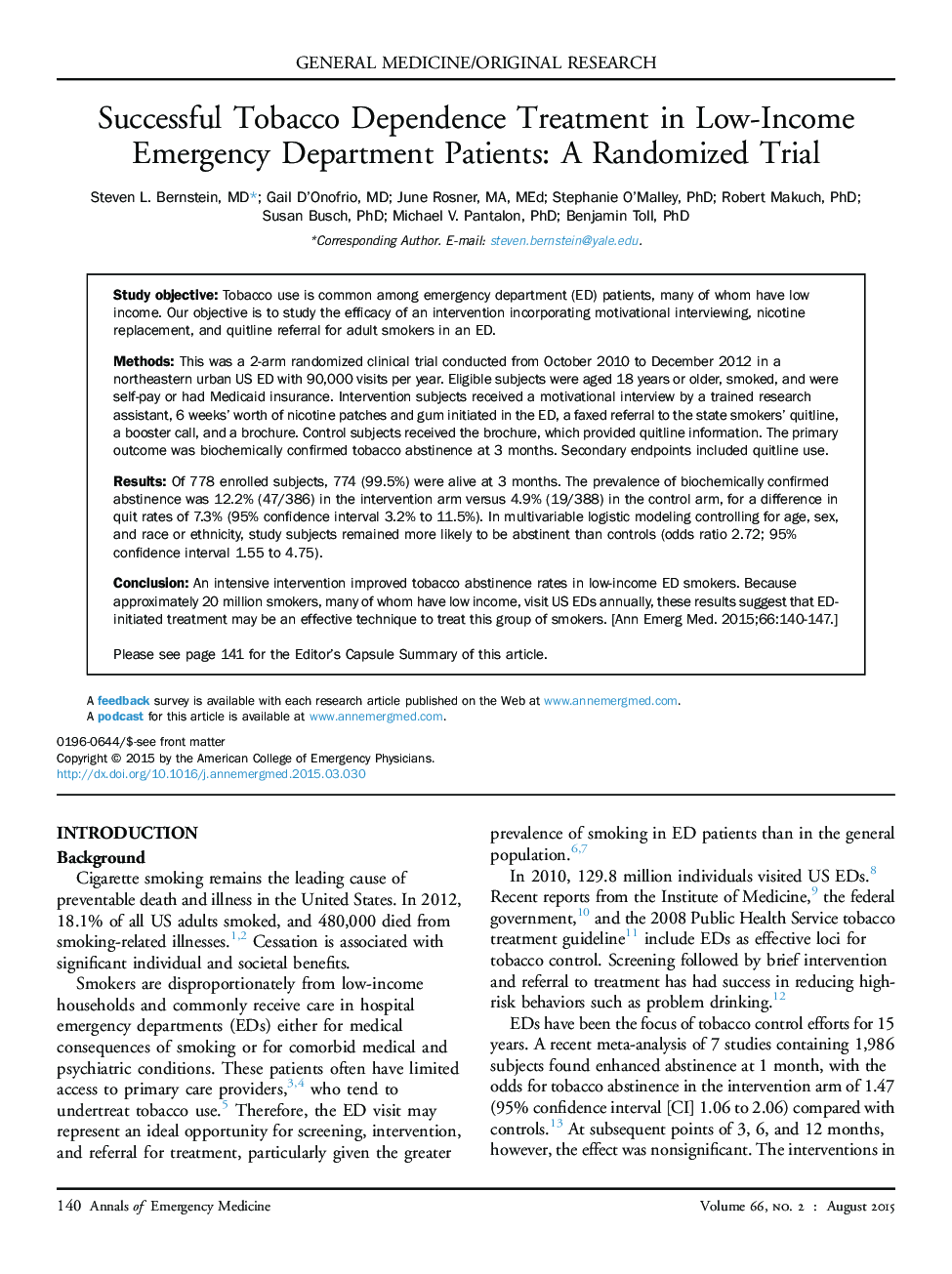| Article ID | Journal | Published Year | Pages | File Type |
|---|---|---|---|---|
| 3228384 | Annals of Emergency Medicine | 2015 | 8 Pages |
Study objectiveTobacco use is common among emergency department (ED) patients, many of whom have low income. Our objective is to study the efficacy of an intervention incorporating motivational interviewing, nicotine replacement, and quitline referral for adult smokers in an ED.MethodsThis was a 2-arm randomized clinical trial conducted from October 2010 to December 2012 in a northeastern urban US ED with 90,000 visits per year. Eligible subjects were aged 18 years or older, smoked, and were self-pay or had Medicaid insurance. Intervention subjects received a motivational interview by a trained research assistant, 6 weeks’ worth of nicotine patches and gum initiated in the ED, a faxed referral to the state smokers’ quitline, a booster call, and a brochure. Control subjects received the brochure, which provided quitline information. The primary outcome was biochemically confirmed tobacco abstinence at 3 months. Secondary endpoints included quitline use.ResultsOf 778 enrolled subjects, 774 (99.5%) were alive at 3 months. The prevalence of biochemically confirmed abstinence was 12.2% (47/386) in the intervention arm versus 4.9% (19/388) in the control arm, for a difference in quit rates of 7.3% (95% confidence interval 3.2% to 11.5%). In multivariable logistic modeling controlling for age, sex, and race or ethnicity, study subjects remained more likely to be abstinent than controls (odds ratio 2.72; 95% confidence interval 1.55 to 4.75).ConclusionAn intensive intervention improved tobacco abstinence rates in low-income ED smokers. Because approximately 20 million smokers, many of whom have low income, visit US EDs annually, these results suggest that ED-initiated treatment may be an effective technique to treat this group of smokers.
